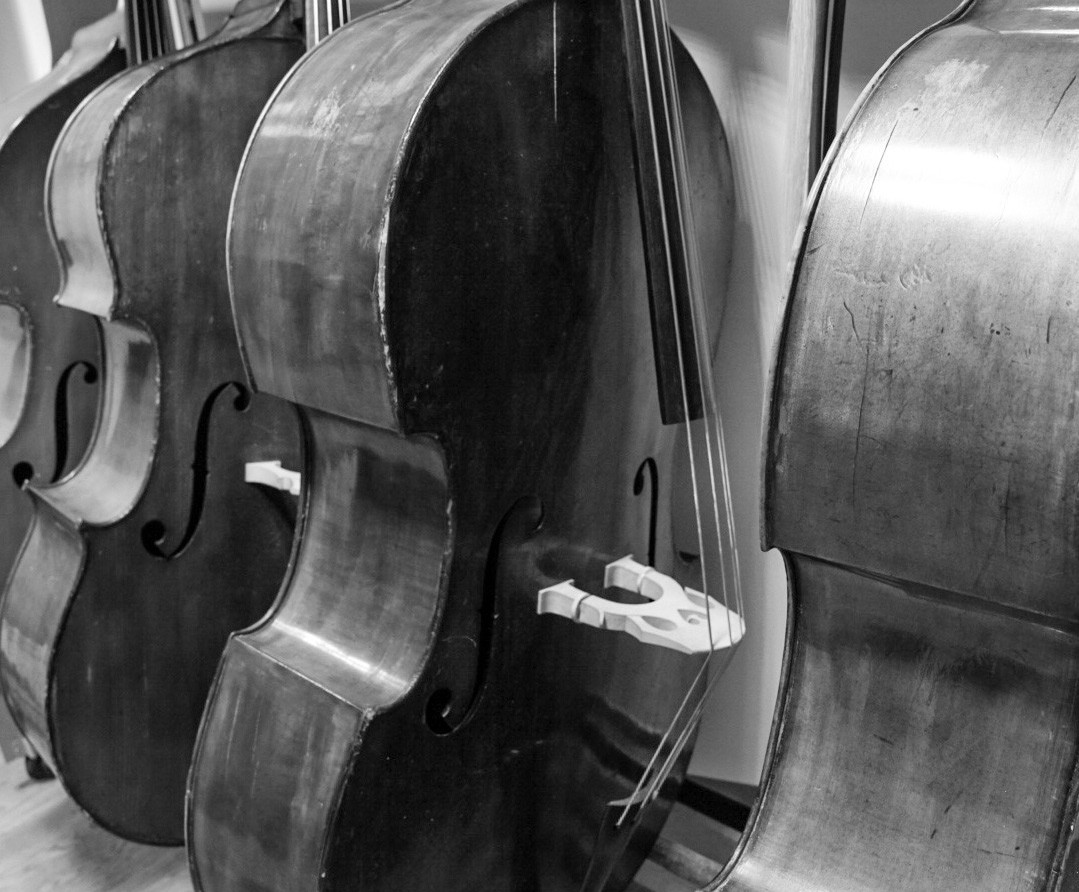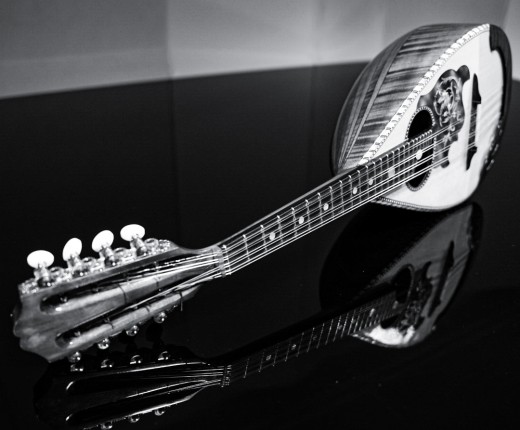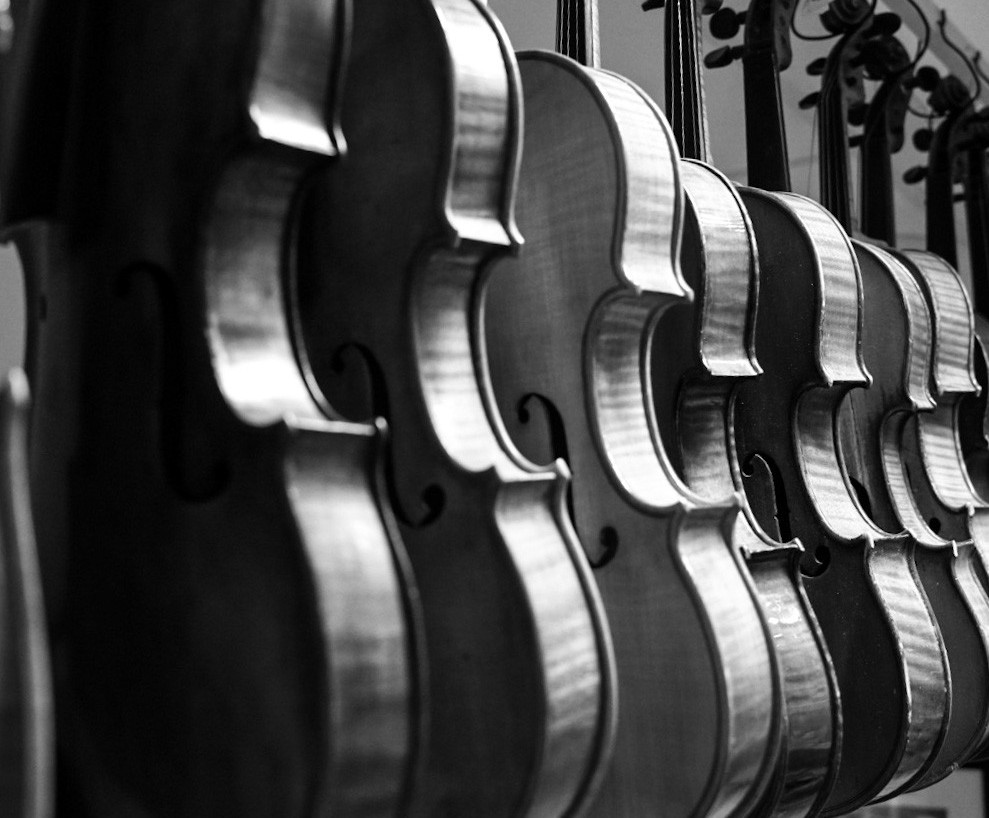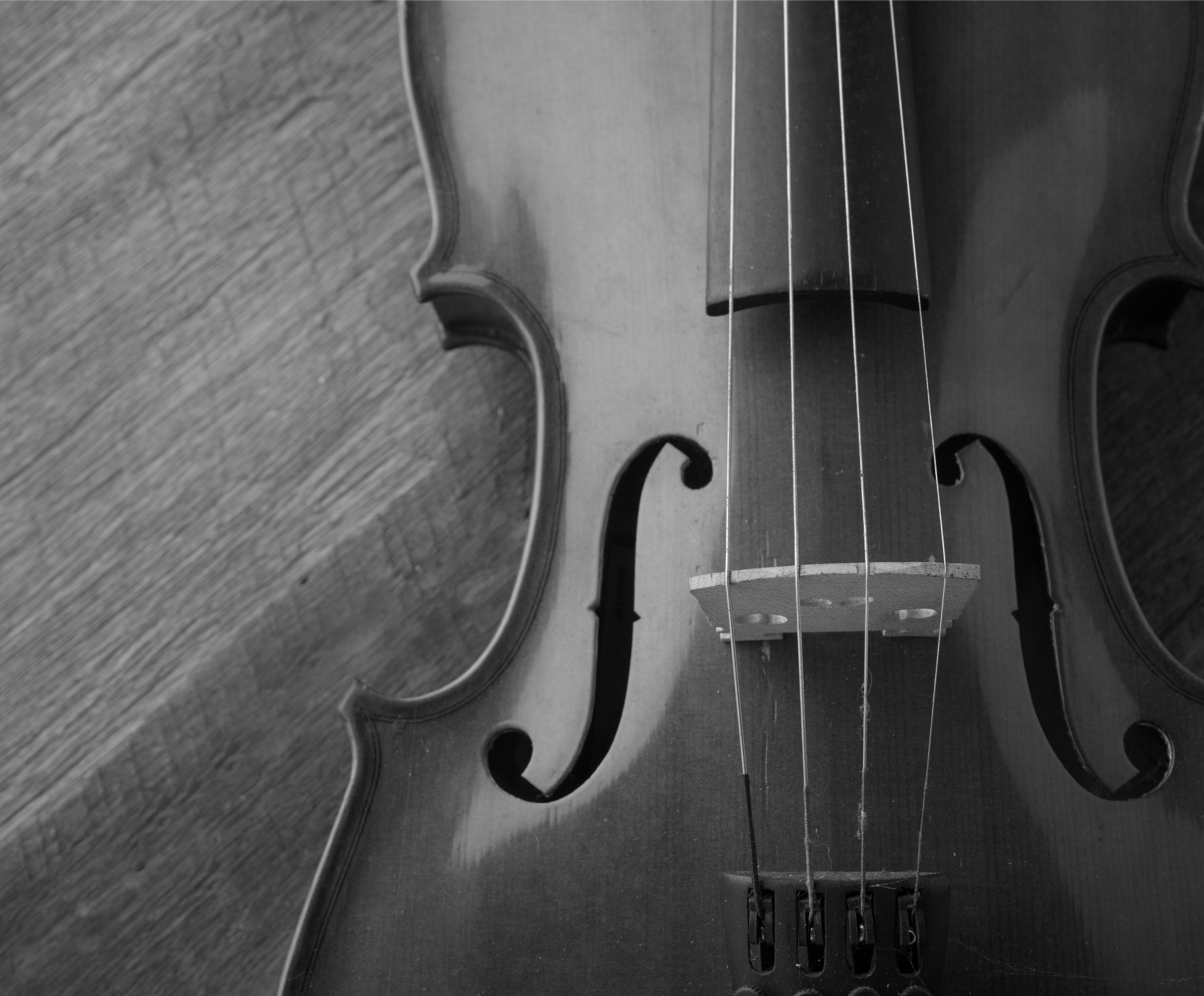Strings
Alto

From age 7
Origin
The viola is a member of the stringed instrument family, like the violin, cello, double bass, guitar and harp. In the 17th century, famous luthiers such as Stradivarius, Amati and Guarnieri created the most beautiful violins of all time. And at the same time, they sought to create a larger violin with a deeper, more velvety sound, and this is how the viola was born. But it was from the 19th century onwards that the viola came into its own in chamber and orchestral music, notably by German composers.
Description
The viola is principally composed of a wooden resonance box and a neck over which four strings are stretched. Sounds are produced with a bow or by plucking the strings with the fingers.
Sound
The viola's sound is a blend of strength and sweetness. It can be majestic, low, hushed or heroic. It bridges the gap between the brilliant sound of the violin and the deeper sound of the cello.
The practice
Playing the viola requires a supple body posture, and develops concentration, memory and anticipation. You can start at an early age. The viola can be found throughout the orchestral repertoire and especially in chamber music, notably in the string quartet. For many years now, it has been used in rock, pop, jazz, blues and many other musical genres. All the great composers have written beautiful works for viola.
Double bass

Ages 7 and up
The double bass is the largest and therefore the lowest of the string instruments. Nevertheless, it can be studied from an early age. As with the violin, it comes in all sizes up to 1/16th double bass, for children aged 6 or 7. However, the double bass remains the ideal instrument for older children and teenagers wishing to take up music. Orchestras are full of double bass players who started playing at the age of 15!The double bass has several centuries of history, and its repertoire is vast: present in baroque, classical, romantic, modern and contemporary music, it is also present in popular music, be it jazz of course, but also music as different as Gypsy music or Argentine Tango... The Academy offers what is known as "classical" teaching, but for several years now the double bass class has been working closely with the "Tango workshop" run by Christiane Bonnay, and together we try to introduce students to other kinds of music at a very early stage. They will also be able to participate in the various orchestras and ensembles within the Académie, and will quickly become indispensable. Because choosing an instrument can be difficult, Thierry Vera, double bass teacher, welcomes all boys and girls, young and old, who would like to try out the double bass for a few weeks before making up their minds. Whatever your age, don't hesitate to push open the doors of the Academy and come meet the teacher and try out the double bass.
Mandolin

From age 7
There are two main types of mandolin:
- The Milanese mandolin or mandurina, with six double strings.
- The Neapolitan mandolin, with 8 strings.
Nowadays, the Neapolitan mandolin is the most widely used, with a teardrop-shaped body and curved back like a lute. However, it differs from the lute in that its soundboard is pierced by an oval soundhole - next to which a plate of tortoiseshell or hardwood is inlaid to prevent damage from plectrum blows - and in that its back is even more rounded. It has four double steel strings tuned in fifths (like the violin): G, D, A and E from low to high.
From the 18th century onwards, mandolins formed a family of instruments comprising, from treble to bass :
- the soprano
- alto (tuned C, G, D, A from low to high),
- the tenor (mandola, tuned an octave below the soprano),
- the bass or mandoloncello (tuned like a cello, an octave lower than the alto) and the mandolone (double bass, also called archimandola), often with 7 or 8 double strings - except the chanterelle, which is single - tuned F (or G), A, D, G, B, E, A.
The earliest known examples of music for mandolin date from around 1700; the first methods date from 1768 (Pietro Denis), 1770 (Fouchetti) and 1772 (Michel Corrette) respectively. Today, many modern methods exist.
The great violinist Nicolo Paganini (1778/1840) began learning music by playing the mandolin. Vivaldi dedicated two concertos to the mandolin. Mozart and various opera composers (Nauman, Grétry, Haendel) used the mandolin in an aria from Don Juan. Beethoven wrote several pieces for this instrument. Later, the instrument was used in the orchestra. Its distinctive timbre prompted composers to use it in symphonic works, such as Gustav Mahler's 7th and 8th symphonies. In the 19th century, Massenet, Verdi, Taneiev, Hans Gal, etc.... composed for the instrument or incorporated it into symphonic orchestras. Later in the 20th century, Schoenberg, Stravinsky, Prokofiev, etc.... made use of its resources. Today, many composers write for the instrument: Henze, Pfizner, Wolki..... Petrassi and Manoury have used it in chamber music. Numerous transcriptions from the violin repertoire have been published.
Other types of mandolin exist, based on the same instrument technique: bluegrass mandolin, Sicilian mandolin, banjo mandolin (or mandolin), Irish mandolin, mandriola and electric mandolin. Great mandolin orchestras have been formed in Germany, Russia, Belgium, Japan, America and even in Paris, France. Festivals are organized as well as international competitions, mainly in Italy, Russia and Japan.
Violin

From age 7
The violin is a bowed-string musical instrument. Made of 71 pieces of wood, glued or assembled together, it has four strings, generally tuned to the fifth, which the instrumentalist, called the violinist, rubs with a bow or plucks with the index finger or thumb.
In classical music ensembles such as string quartets and symphony orchestras, the violin is the smallest and highest-pitched instrument in its family, which includes the viola, cello and double bass. Its creation dates back to the 16th century. Rapidly popularized, it occupies an important place in Western classical music: great composers have written for this instrument (concertos, chamber music, symphonic pieces, etc.) and even played it themselves (Vivaldi, Bach, Mozart, etc.).
Cello

From age 7
It was in the Méthode de violoncelle et de basse d'accompagnement written by Messrs. Baillot, Levasseur, Catel and Baudito (1804) that the comparison of the cello with the human voice seems to have appeared for the first time. The authors emphasize the instrument's great ability to sing.
At the same time, in the 19th century, the cello - or at least the sound that the best cellists could produce - was widely compared to the voice of the greatest singers. This metaphor underpinned the development of the cello's repertoire throughout the 19th and early 20th centuries. This image is undoubtedly rooted in the cello's essential characteristic of a very wide sound range, covering all types of human voice, from the deepest to the most strident. But long before it was elevated to the limelight, the cello had to play the bow to find its rightful place and become a solo instrument in its own right. In France, in the family of bowed instruments, it was first the vielle, a pear-shaped instrument played by minstrels, that came into fashion. Then, coming from Spain, the viol seduced the whole of Europe in the 16th century. In France, it became the solo instrument par excellence, when the violin family was born in Brescia in 1520. In Italy, the viola da gamba is played, and its method of playing has probably even been developed, but it is less widespread than in the rest of Europe. The viola da gamba has a beautiful, languorous sound, but is too thin to stand up for long against the powerful playing of the violin. The luthiers who invented this new instrument therefore built others to accompany it. The cello was thus inspired by the violin's shape, and has not changed much since its origins. Although Italy was quick to adopt the cello, integrating it into orchestras and then chamber ensembles, it wasn't until the 18th century that French audiences heard it on the tours of Italian artists, notably at a memorable concert by Luigi Boccherini in Paris. Gambists fiercely opposed its arrival, denouncing the "enterprises of the violin and the pretensions of the cello", the famous quarrel between the moderns and the ancients. In 1827, the cello became part of the Paris orchestra, and in 1733 the first sonatas by Jean Barrière were published. Little by little, virtuoso gambists who were also solid composers ousted the viola da gamba in favor of the cello, and began to compose solo works for it. Aided by the invention of thumb positions on the strings, cellist Francesco Alborea ("Franciscello", 1691-1739) was the first to make them known. Then came the time of the great virtuosos, Berteau, Duport, and in Germany, Romberg, Goltermann, Grützmacher and David Popper. In fact, it was a German, Johann Sebastian Bach, who gave cellists the greatest gift of all: his Six Suites for Solo Cello, a veritable bedside book for any self-respecting cellist. After falling into oblivion, they were rediscovered by Pablo Casals, one of the cello's most emblematic figures. The 19th century was not rich in works for solo cello, with the exception of Max Reger's Suites. It was not until Zoltan Kodaly in the twentieth century, and his masterpiece, the Sonata for Solo Cello, that the instrument's repertoire was enriched by another major solo piece. In the wake of this, composers began to make contact with the instrument again, dedicating some very fine pieces to it: Cassado, Xenakis, Hindemith, Britten, Lutoslawski, Dutilleux, Ginastera, Berio, Bacri, Monnet, Florentz... Thanks in large part to Mistlav Rostropovitch, who never ceased to commission composers. This great cellist of the 20th century, along with Janos Starker, the creator of Zoltan Kodaly's sonata for solo cello, is also the man who gave the instrument worldwide media stature.